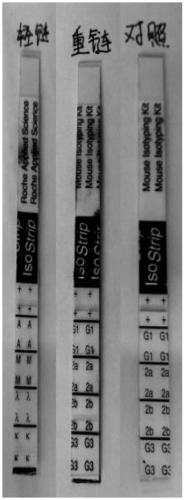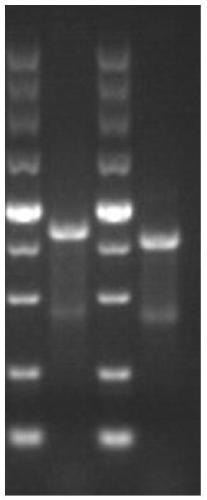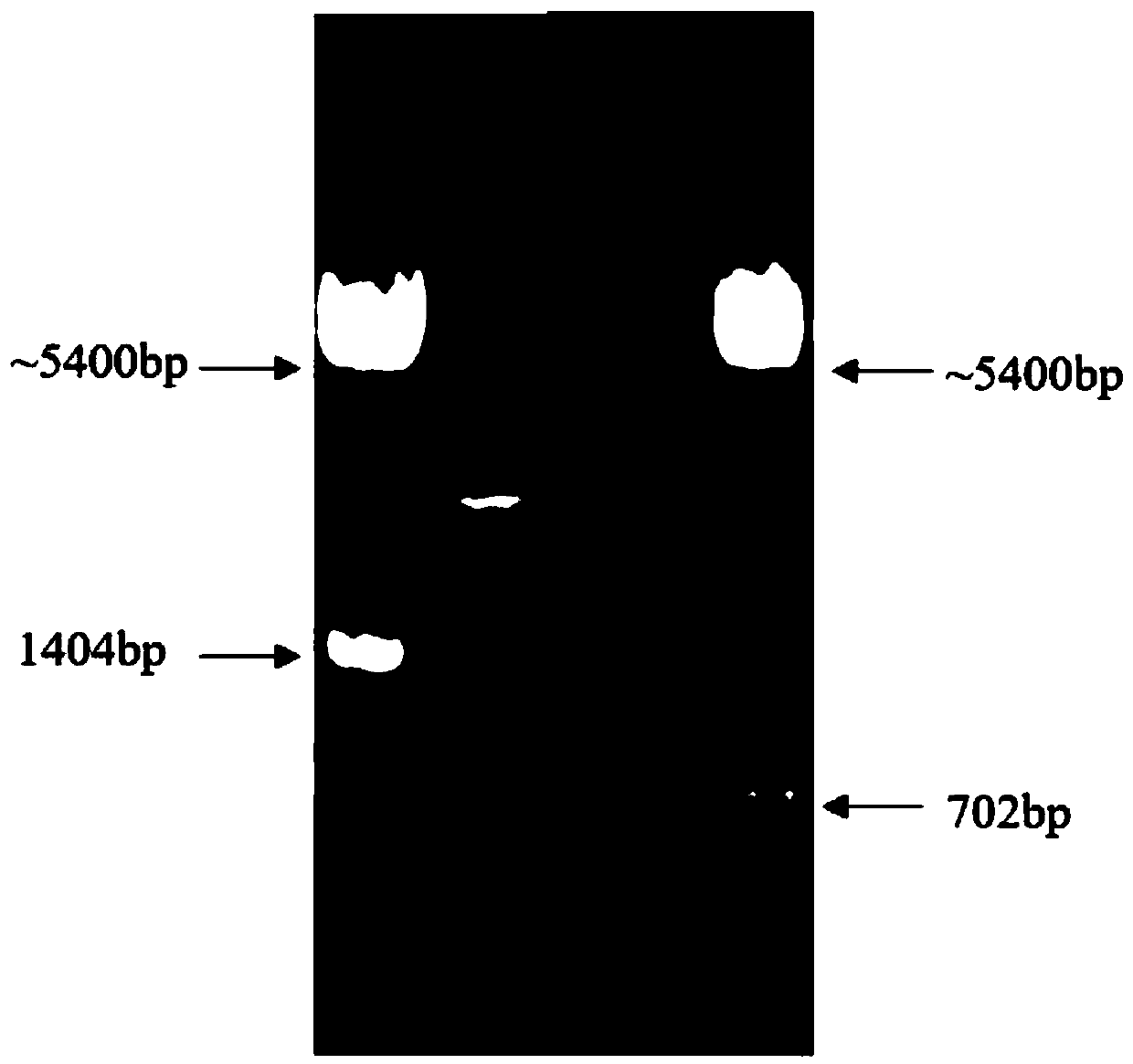Heavy chain and light chain variable region for resisting to canine parvovirus antibody and gene engineering antibody
A technology of genetically engineered antibodies and canine parvovirus, applied in genetic engineering, antiviral immunoglobulin, plant gene improvement, etc., can solve problems such as reducing immunogenicity, reducing curative effect, immune rejection or allergic reaction, and achieve inhibition of agglutination , good active effect
- Summary
- Abstract
- Description
- Claims
- Application Information
AI Technical Summary
Problems solved by technology
Method used
Image
Examples
Embodiment 1
[0021] Preparation and screening of embodiment 1 mouse CPV monoclonal antibody
[0022] (1) Preparation of hybridoma cell lines
[0023] Animal immunization Select 5 female BALB / c mice aged 6-8 weeks, inject the concentrated and purified canine parvovirus third-generation virus and the same amount of complete Freund's adjuvant emulsion into the mice, and inject 200 μl subcutaneously into each mouse . Two weeks later, the second immunization was carried out, and the mice were injected with concentrated and purified canine parvovirus and an equal amount of Freund's incomplete adjuvant emulsion, and the injection volume and method were the same as the first immunization. Two weeks after the second immunization, the third immunization was carried out according to the second immunization. Two weeks after the third immunization, mice with high serum titers determined by indirect ELISA were selected for intraperitoneal injection.
[0024] Cell Fusion BALB / c mice about 8 weeks old w...
Embodiment 2
[0043] The preparation of embodiment 2 mouse origin CPV genetic engineering antibody
[0044] (1) Acquisition of variable region sequence of CPV monoclonal antibody
[0045] Utilize the operation method of RNA extraction kit to extract the total RNA of hybridoma cell line, and then use RACE 5' / 3' kit (Takara Company), cDNA was obtained by reverse transcription, and primers were designed according to the subtype of the monoclonal antibody, as shown in Table 3.
[0046] Table 3 Antibody Amplification Primers
[0047] serial number
Primer name
Primer sequence
SEQ ID 5
Heavy Chain External Primer (5'-3')
AGG ACA GGG GTT GAT TGT TGA
SEQ ID 6
Light chain external primer (5'-3')
CTC ATT CCT GTT GAA GCT CTT GAC
SEQ ID 7
Heavy Chain Internal Primer (5'-3')
CTC AAG TTT TTT GTC CAC CGT GGT GC
SEQ ID 8
Light Chain Internal Primer (5'-3')
CTC ATT CCT GTT GAA GCT CTT GAC AAT GGG
[0048] The DNA fragments o...
Embodiment 3
[0053] Example 3 Activity Research of Mouse CPV Genetic Engineering Antibody
[0054] (1) Hemagglutination inhibition method was used to measure the resistance effect of CPV genetic engineering antibody on the combination of canine parvovirus and red blood cells
[0055] Prepare the diluted CPV to be eight units of virus (that is, a CPV virus solution with three hemagglutination units). Add 15mM PBS of pH 6.5 to a 96-well V-type hemagglutination plate, 25μl / well, and add 25μl CPV to the first column For monoclonal antibody, do 3 repetitions for each antibody, do 2-fold gradient dilution, dilute to the last row and discard 25 μl of liquid, the last two rows are used as the porcine red blood cell control area, sample area (including positive control group, experimental group, Empty plasmid control group, blank control group) were added 25 μl eight-unit CPV virus solution to each well, and 25 μl PBS was added to the porcine red blood cell control area, and kept in a 37° C. incuba...
PUM
 Login to View More
Login to View More Abstract
Description
Claims
Application Information
 Login to View More
Login to View More - R&D
- Intellectual Property
- Life Sciences
- Materials
- Tech Scout
- Unparalleled Data Quality
- Higher Quality Content
- 60% Fewer Hallucinations
Browse by: Latest US Patents, China's latest patents, Technical Efficacy Thesaurus, Application Domain, Technology Topic, Popular Technical Reports.
© 2025 PatSnap. All rights reserved.Legal|Privacy policy|Modern Slavery Act Transparency Statement|Sitemap|About US| Contact US: help@patsnap.com



